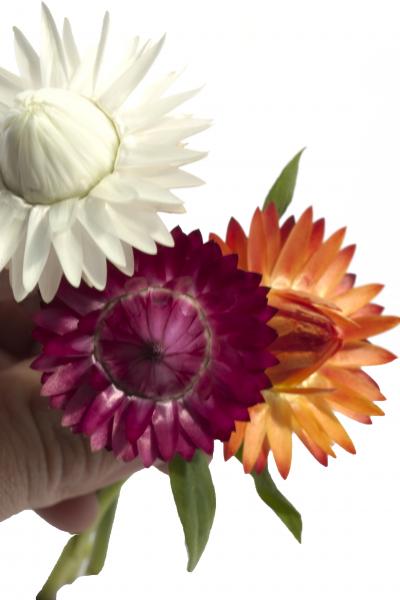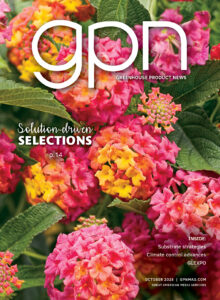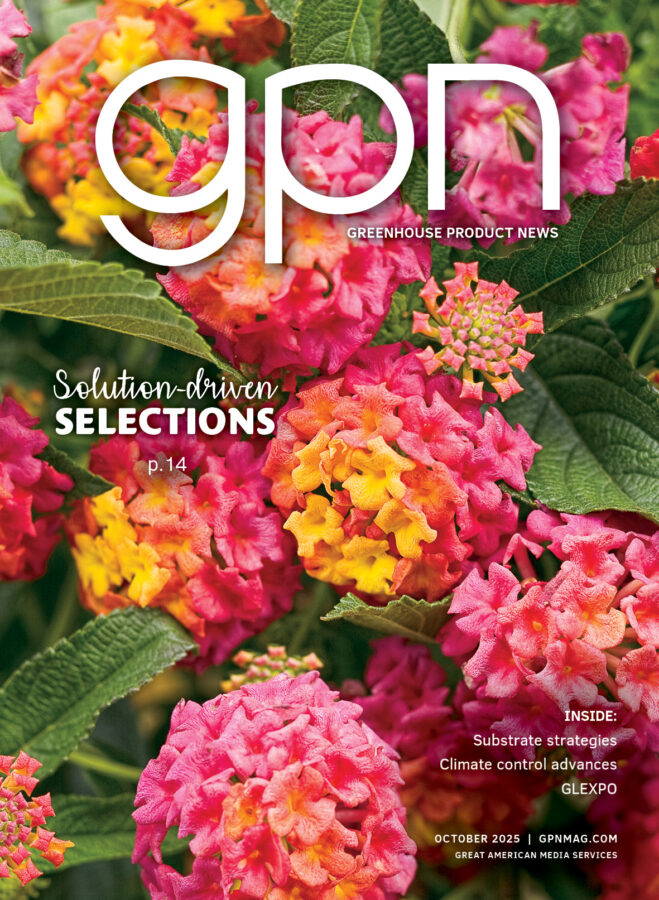Crop Culture Report: Bracteantha Cottage Series

Eager to reinvent the category of strawflowers, we’re excited to introduce the vastly superior Cottage series of bracteantha from Westhoff. Unlike the old-fashioned strawflowers, the Cottage series combines the most disease-resistant genetics available with all-season durability; these plants mean success for the gardener. The colors are matched perfectly in production and can easily be mixed in larger containers to create four-in-one color combinations for spring through autumn sales.
Bracteantha are excellent dual-season sellers. They take the heat and cool temperatures equally well and can easily be produced for both early spring and autumn sales. Many growers are bringing in unrooted cuttings of Cottage bracteantha in the summer months, and finishing as an easy option to diversify mum crops for autumn sales.
Lineup
The Cottage lineup currently consists of four colors and a mix that works great with fall colors: ‘Cottage Bronze’, ‘Cottage Rose’, ‘Cottage Yellow’ and ‘Cottage White’. Four additional colors and a spring mix are coming for the spring 2017 season.
Propagation
Bracteantha are a relatively easy crop to grow but do take a little bit longer in propagation. Vivero is the only unrooted licensee offering the Cottage series as callused cuttings, which helps speed up the rooting process and have a very uniform rooting phase for the grower.
Whether you’re using callused or traditional unrooted cuttings, choose a well-drained rooting media with an EC of 0.75-0.80 and a pH of 5.8-6.0.
The temperature of your rooting media should be maintained between 68-72° F until roots are visible. As soon as roots are visible, begin feeding at 75 ppm and gradually increase to 150-ppm nitrogen as roots develop.
In the liner stage, high light, moderate water stress and good air movement will reduce the need for PGRs. However, when propagating during summer months or in warm climates, an application of Bonzi spray at 2-3 ppm, two weeks after sticking will reduce stretching.
Rooted liners should be ready in three to four weeks, or two to three weeks if using callused cuttings.
Finishing Media. Use a soilless medium with good aeration and drainage with a pH of 5.8-6.2 and a high starter charge.
It is best to run plants on the dry side, so test media regularly for pH and salt levels.
Temperature. Maintain temperatures at 55-60° F nights and 65-75° F days. Warmer night temperatures will promote rapid, soft growth. Cool day temperatures will dramatically improve overall crop quality but will slow the finish time.
Light. Keep light levels high. Cottage bracteantha grow best at 5,000 to 8,000 foot-candles. Higher light intensity and longer days promote earlier flowering.
Watering. Keep plants moderately dry to control growth, but do not allow the media to dry completely or plants will get tip burn. Keep the foliage dry at night and have good air circulation around the plants after watering.
Fertilizer. Keep plants on a relatively low feed of 150-ppm nitrogen. Excessive phosphorous and ammoniacal nitrogen will promote disproportionate foliage, covering up the flowers at retail. Additional iron may be applied if new leaves appear chlorotic. Leach plants periodically with clear water to prevent salt damage.
Pinching and growth regulators. No pinching is needed for small containers. Larger containers may benefit from a pinch, but Sumagic at 10-15 ppm or Bonzi at 20-25 ppm is also effective. Cool temperatures, high light, keeping the plants dry and low feed will work as natural growth regulators.









 Video Library
Video Library 


















